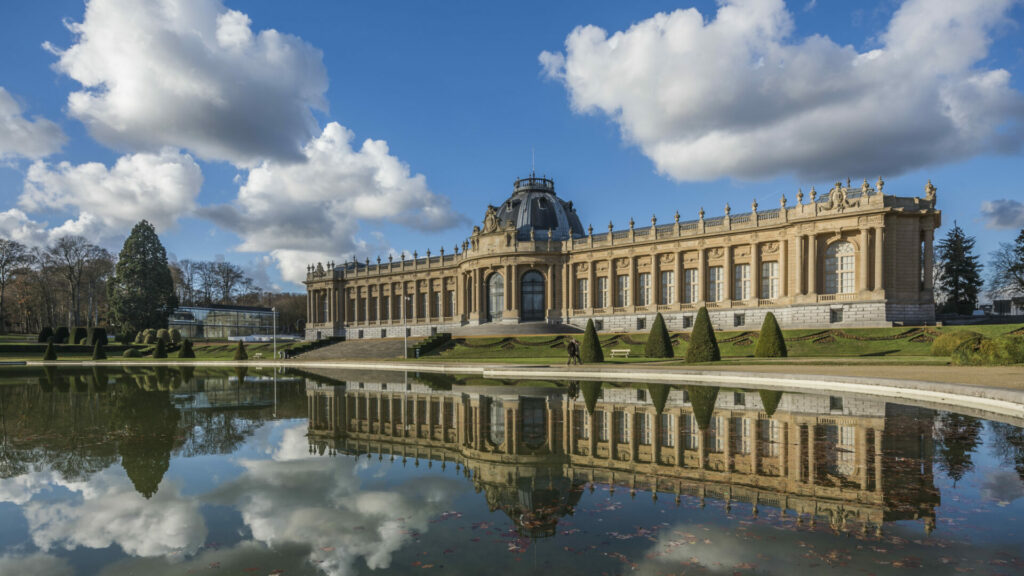There is no justification for human remains collected during the colonial period to be on display in Belgium museums, said Belgium’s Bioethics Committee (an advisory body of the FPS Public Health) in a new report released on Wednesday.
Three Belgian museums (the Royal Museum for Central Africa, the Natural Science Museum and the Royal Museum of Art and History) asked the Committee to look into the status of human remains in institutional, scientific and private collections. It concluded that these remains were taken "in a context of violence and with the purpose of justifying the domination of colonisers through scientific racism."
To demonstrate the purposeful violence of taking human remains, the Bioethics committee recounted the story of Congolese chief Lusinga Iwa Ng’ombe, who was killed and decapitated by Emile Storms, a Belgian officer, during a raid in 1884.
Storms wrote in his journal that he took the chief's head as a prize of war, so he could include it in his "collection." Eventually, his skull came to Belgium as a scientific specimen, and it currently still is in the storage of the Royal Belgian Institute of Natural Sciences.
Treated with respect, dignity and decency
Now, the Committee’s report makes several recommendations, insisting that all remains should be treated with respect, dignity and decency: human remains are important to "ensure the cohesion of human groups, by which we recognise shared histories," the Committee explained.
Human remains, apart from those collected in a colonial context, can still be displayed with dignity towards the deceased. For example, all instances of nudity should be avoided in institutional, private or religious settings.
The report concluded that all commerce with human remains, even if it is for scientific purposes, is unacceptable, and noted that it is currently still possible to buy human bones, especially skulls. Belgian law has blind spots in this respect and certain human remains are considered to be objects.
Related News
- Decolonising the mind: Afro-Belgians to be honoured in public spaces
- Belgian development aid ‘contaminated with white saviour complex’, new study finds
- Belgian society knows little of colonial past, study shows
Before 2016, most trading of this sort was taking place on eBay, until the site banned the sale of human remains (except hair). Ever since then, the market moved to networks like Instagram, the report explained, and the prices increased over years. In 2013, human bones would sell for $5,200, in 2016 they sold for $57,000.
Human remains are not only sold on online platforms: just last year an auction house in Brussels drew heavy criticism for attempting to sell three human skulls from the colonial period of the Congo Free State.
The report also paid close attention to the human remains that were collected from colonised countries, affirming that they were obtained through "the violence and brutality that is characteristic of colonisation itself." Besides ending their use in displays, the report said it is essential that Belgium returns them to where they came from.

Royal Museum for Central Africa.
The authors recommend that Belgian institutions take into consideration any and all requests for returns that they may receive, and that the institutions provide administrative assistance to all applicants for restitution.
Equally, this is a matter of repatriation, according to the committee, and it should not occur in a "detached and purely administrative manner without looking back to the past": there should be an acknowledgement of the resulting trauma and a dialogue about the consequences that the looting of these remains had on colonised populations.
The Committee recommends that the European Union enacts a prohibition on the trade of human remains within the Union and with non-EU countries and that Belgium establishes a legal framework for the repatriation of human remains to their origin countries. The Committee said that the return of human remains should also include that of funerary objects and the containers where the bodies were.
Belgium did pass a law recognising the inalienable character of colonial-era artefacts and created a legal framework for their return in June 2022, however, it does not include human remains, only cultural objects.
Le projet de recherche HOME recommande le #rapatriement des restes humains historiques des anciennes colonies belges et la création d'un point focal sur les restes humains 👉https://t.co/udd4Prvp4l #restitution [photo: crânes du cimetière médiéval de l'abbaye de Coxyde; IRSNB] pic.twitter.com/8jmt1irPb1
— RBINSmuseum (@RBINSmuseum) March 29, 2023
Some museums have chosen to stop displaying human remains, like the Royal Museum for Central Africa and the Museum aan de Stroom (MAS) in Antwerp, but many Belgian institutions still have human remains in their inventories. As recently as 2018, the skulls of 50 people of Congolese origin from the colonial period were found in the laboratory of the Université libre de Bruxelles (ULB), which they subsequently agreed to return.
A recent survey of 56 collections found at least 30,000 human remains in Belgian institutions but showed that the origin of 99% of them is unknown.
The Royal Belgian Institute of Natural sciences says that it has more than 500 remains in its inventory that were obtained in a “very problematic” colonial context from the Democratic Republic of Congo, Rwanda and Burundi.

